- Administrator
- Albums and Singles
SWANS: WE ROSE FROM YOUR BED WITH THE SUN IN OUR HEAD 2XDIGIPACK CD
YG1969 | CDORDERS WILL SHIP MONDAY MAY 14
-SIGNED BY M.GIRA-
SWANS YG1969
This is now available as a deluxe digipack with beautiful art by Heidi Yardley.
“We Rose…” was initially released as a limited edition of 1000, handmade special 2xcd package with various levels of purchase for fans to offset the costs of the new Swans studio album The Seer. The edition of 1000 sold out in under 24 hours.
Here are some early reviews for your perusal:
from The Quietus
from Tiny Mix Tapes
from Pitchfork
TRACK LISTING: disc one: 1. intro/no words no thoughts 2. jim 3. beautiful child 4. the apostate 5. yr property 6. sex god sex disc two: 1. the seer (intro)/ i crawled 2. eden prison 3. 93 ave. b blues / little mouth.
Recorded variously in Melbourne Australia, Berlin Germany, and NYC.
SWANS: michael gira - guitar, vocal; norman westerg - guitar; phil puleo - drums, duclimer; thor harris - drums/percussion, vibes, clarinet, melodica, violin; christoph hahn - double lap steel guitar; christopher pravdica - bass.
These recordings capture the rejuvenated and invigorated Swans as the group staked out new sonic and rhythmic terrain in 2010/11. The seeds of much of the upcoming album The Seer are contained herein as the group developed new material while on tour. The tour(s) saw Swans enjoy the largest and most diverse audiences of their career. Contrary to the expectations of some, the experience was, though sometimes extreme, always joyous.
Note from Michael Gira: Thanks to all of you who attended the Swans shows during our recent tours. The experience, for us, was life-giving and nourishing. The audiences were not only the largest with which we’ve ever been blessed, but the most genuinely connected and in tune with the sonic/psychic experience in which we all participate. Thank you!... Represented in these discs are the best recordings we could provide of the (ever-evolving) shows. Those of you who attended the early shows realize that the first iterations of the music morphed and grew (seemingly with a will more expansive than our own) into something quite different by the end. This, in itself, was immensely gratifying. We also developed many new songs – or sonic events is perhaps a better way to describe some of them - along the way. In compiling these recordings and mixing them with my trusted friend and engineer Kevin McMahon (at Marcata Studio, Gardiner NY), we did our best to represent that transition... if you choose to acquire this 2 disc set, in my view it would behoove you to listen to the music at a generous volume level. This has absolutely nothing to do with an aggressive intent, as some mistakenly assume. Exactly the opposite, in fact. As with the live experience, it’s all about immersion. We – Swans - experience that sense of being subsumed in something greater than ourselves when we perform, too. Maybe that’s even our selfish reason for making the music in the first place. At the best of moments, it doesn’t even feel as if we are playing the music ourselves. More that we’re animated – vivified – by the ongoing sonic wave. I can’t speak for my friends and cohorts, but it’s what I live for. In any event, it’s my hope these discs provide you with a positive experience of some sort....
Read More
- Administrator
- Albums and Singles
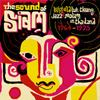
As anyone who picked up Siamese Soul or Electric Cambodia last year will probably attest, there was some absolutely amazing music being made in Southeast Asia in the '60s and '70s, so I was pretty thrilled when I heard Soundway was throwing their hat in the Thai pop ring.  As expected, The Sound of Siam is a pretty spectacular album, expertly balancing soulful, funky greatness with exuberant, kitschy fun and unearthing some incredibly obscure artists in the process.
The Sound of Siam is the first Soundway collection to involve curator Chris Menist, who has previously done some work for Soul Jazz and compiled a very interesting sounding collection of weird Pakistani film music for Finders Keepers.  Menist is an English percussionist/music journalist currently living in Bangkok, which makes him one of few people uniquely suited for this endeavor.  Nevertheless, assembling a compilation of decades-old Thai music would be a Herculean undertaking for anyone–even without a language barrier–and one that requires complete immersion, patience, and a hell of a lot of crate-digging.  At the time of many of these recordings, recording studios, records, and record players were all quite uncommon in Thailand, so releases were often self-distributed and went largely to collectors and folks like party DJs until cassettes ultimately took hold. Things are further complicated by the fact that most releases were only 45s and that cover art could sometimes be quite misleading regarding an album's actual participants.  Also, vintage music is not exactly revered or coveted in Thai culture.  Fortunately, many of the old record shops from the period are still around and still have the same owners and the same dusty stock, so a suitably intrepid person can still find some gems with enough persistence (provided they don't have allergies).
The biggest revelation here is Chaweewan Dumnern, who contributes three songs, all of which are excellent.  My favorite is "Lam Toey Chaweewan," in which she plays the role of a mistress telling her lover that she'll wait for him to leave his family.  Of her three pieces, that one has the sultriest groove, but her vocals are thoroughly gripping and oozing with emotion at all times.  Her inclusion is quite a coup for Miles Cleret and Menist, as I have not seen her work on any other compilations and I had an extremely hard time even finding any of her Thai releases (hint: her name also can be spelled "Chawiwan Damnern").  Another remarkable piece is The Petch Phin Thong Band’s instrumental "Soul Lam Plearn," which blasts into a completely raucous, utterly infectious, and triumphantly ridiculous rave-up after a deceptively noodling lute intro.  I was also quite a fan of Onuma Singsiri's sassy vocals on the melodramatic "Mae Kha Som Tam," which uses a papaya-based salad as a metaphor for urban loneliness. However, there are quite a few other instantly likable songs here as well, those just happen to be the upper tier to my ears.  There is very little weak material or filler.
Aside from the scattering of truly great songs and characteristically informative liner notes, The Sound of Siam is also pretty exceptional for its many bizarre and unintentionally comic touches.  For example, the artists include both former rickshaw drivers and monks, "Ding Dong Ding" was originally on the soundtrack of an Italian "caveman sex comedy," and Plearn Promdan contributes a song about drunken monkeys and weed-smoking elephants.  The music itself can be equally absurd, as Dao Bandon's "May Jom Ka Lon" kicks off with circus-style brass band music and many other songs feature incongruous ripped-off classic rock riffs (even the good ones). Fortunately, quality still reigns, so all of amusing background information, silly morality tales, and misguided musical flourishes only serve to imbue the album with an enormous amount of character and fun.  This is my favorite compilation of the year.
- Chaweewan Dumnern, "Lam Toey Chaweewan"
- Dao Bandon, "Me Jom Ka Lon"
- The Petch Phin Thong Band, "Soul Lam Plearn"
 
Read More
- Administrator
- Albums and Singles
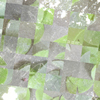
The last album that Ben Recht and Isaac Sparks put out (Baby, It's Cold Inside) was named Boomkat's "Album of the Year" for 2008, so there was quite a bit of buzz and excitement surrounding the release of this follow-up.  Fortunately, God Was Like, No (the band's vinyl debut) does not disappoint and delivers yet another pleasant batch of warm and crackling soundscapes to enjoy.  Also, their streak of witty album titles continues unabated.
The Fun Years is kind of an odd project, the sort of thing that shouldn't nearly work as well as it does.  For one thing, although Recht and Sparks got their start in Cambridge, MA, they are now based on opposite ends of the country and collaborate mostly remotely.  Also, the duo are pretty disparate in their backgrounds, with Isaac being a former hip hop DJ and Ben being a computer science teacher with a PhD from MIT. Even the instrumentation itself is a bit peculiar, as The Fun Years’ combination of baritone guitar and turntable manages to hit an improbable common ground of blissful, droning ambience between the expected directions, never veering too far into either rock or cerebral abstraction.  Perhaps the key thing that draws these two together is a shared fascination with the unadulterated sound of their respective instruments. Lots of processing certainly occurs on God Was Like, No, but Recht's guitar still generally sounds exactly like a guitar (not laptopped into oblivion) and Sparks largely uses his turntable in a very "Phillip Jeck" way: as a means of sound creation rather than as a sampling device.
The album opens with its best song, as "Breech on the Bowstring" beautifully combines a cool jangly guitar loop with a melancholy chord progression of slow-motion swells.  However, each side of the album essentially feels like a lengthy single piece, as all the songs segue seamlessly from one to another and everything stays very firmly in the same vein.  So, in essence, "Breech" is merely an especially excellent beginning to a very good long-form piece.  The album’s other "song" highlight is "Makes Sense to Me," which gradually boils up into a masterfully restrained intensity as the guitars increase in both frenzy and volume. That is not to say that the rest of the songs are worse, it's just that those two pieces are the times when melody comes most strongly to the fore.
While it is definitely Recht's guitar work that gives the songs their structure, emotional shading, and recognizable melody, the less tangible contributions of Sparks are equally important.  Isaac's textural wizardy is the main thing that separates The Fun Years from the horde of other people making guitar-based ambient music these days, providing a grittiness and hissing pulse that takes the music to a deeper level. Also, the duo prove to be quite adept at turning the omnipresent vinyl crackle into an asset, using it as a fog for sounds to hide behind before subtly sneaking their way into the foreground.  As such, God Was Like, No only truly reaches its maximum potential when headphones or extreme volume are involved.  The balance between melody and manipulated static leans a bit too heavily towards the latter for most of these songs to make a substantial immediate impact, but there is quite a bit of compelling microcosmic activity to keep me interested once I've been lured in.  As a result, I think the duo's masterwork is probably still ahead of them, but this is quite a likable and ambitious effort nonetheless.
 
Read More
- Administrator
- Albums and Singles
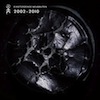 At first, this fourth entry in Neubauten’s long running compilation series looks like a waste of money for those who have been following their online supporter projects and a godsend for those who have missed out on the plethora of limited albums the band have produced in the last decade. On closer inspection, while the vast majority of the material exists in some form or other on the original albums, most of the versions here are alternate takes, mixes or live versions. While not a perfect compilation, there is a lot here for new and veteran fans alike.
At first, this fourth entry in Neubauten’s long running compilation series looks like a waste of money for those who have been following their online supporter projects and a godsend for those who have missed out on the plethora of limited albums the band have produced in the last decade. On closer inspection, while the vast majority of the material exists in some form or other on the original albums, most of the versions here are alternate takes, mixes or live versions. While not a perfect compilation, there is a lot here for new and veteran fans alike.
Someone like me, who has bought everything the band has put out, will not feel cheated by Strategies Against Architecture IV. There are enough stones left unturned to make this into a worthwhile investment. Needless to say, if you are reading this and have no clue about Neubauten’s supporter projects or Musterhaus subscription series then you are in for a treat. The material can be split into three main categories: songs from Neubauten’s main "public" albums (Perpetuum Mobile, Alles Wieder Offen, and Jewels); songs that have up until now been restricted to those who subscribed to their various online projects; and songs that have either never officially seen the light of day.
While songs from the first grouping will be most familiar, Neubauten have included alternative and live versions where possible. Some of the tracks feel a bit throwaway to me such as the radio edit of "Perpetuum Mobile" which is too short to fully convey the song’s concept. However, alternative takes of already rare songs like "Tagelang Weiss" and "Dead Friends (Around the Corner)" more than make up for this minor shortfall. The live version of "Youme & Meyou" from the group’s 25th anniversary concert in Vienna demonstrates how the band developed their songs on the road; here they distill the feelings behind song into a concentrate of beautiful imagery.
Songs from the supporter projects and the Musterhaus subscription series have been long treated as exclusive status symbols for many fans, many an argument erupted on Neubauten’s site about whether the group would be selling out by breaking their promise to paying supporters and making these songs available to a wider audience. I have always felt that everyone should have access to this music (and they do thanks to the freeloaders of the Internet) because it is some of the most vibrant and exciting music Neubauten has ever done. "Insomnia" and "X" both formed a substantial tract of the first supporters album and the latter is included here with alternative vocals care of Wir Sind Helden’s Judith Holofernes. Elsewhere, sections from the Grundstueck album and tour show exactly how relevant Neubauten still are. "GS1" and "GS2" are mindbogglingly brilliant, the group shining as brightly as that kalte sterne burned 30 years ago.
The unreleased material varies in quality, it very much feels like the best studio offcuts were already used to bulk out the supporter project and Musterhaus releases. "Party in Meck-Pomm" is a silly, almost throwaway piece but worth including to show what kind of things the band get up to in the studio when left to their own devices. A new remix of "Weil Weil Weil" is better than any of the ones on the Weil Weil Weil EP but is not exactly the highlight of Strategies Against Architecture IV. "Waiting for the Call" is the most substantial of the unreleased pieces, a collage of two live improvisations showing a glimpse of a song that might have been. Starting out as an amorphous gurgling, it suddenly sprouts legs and strides decidedly from a forgettable improvisation into a tantalisingly good song. It is a shame they never followed up on it.
Anyone who knows me or reads Brainwashed regularly will know that Neubauten have always been a group I have been passionate about. Therefore it is hard to listen back to these songs with an objective, critical ear as the music is so intertwined with some of my dearest memories such as being part of Neubauten’s Social Choir at the Palast Der Republik, the friendships made through the supporters project and watching the webcasts of most of this material being written and recorded in the first place. Yet, listening back to these two CDs and pushing those memories aside, Strategies Against Architecture IV shows how strong Neubauten still are despite the repeated claims by old school purists who insist that everything after Zeichnungen des Patienten O.T. or Halber Mensch has been rubbish.
samples:
 
Read More
- Administrator
- Albums and Singles
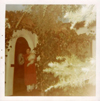 Under the guise of Padna, Nat Hawks stormed onto tape label Stunned with Siberia/Hinterland, a mash-up of varied styles that reflected the bustle of a scene fraught with chaos. Hawks has quickly followed up that overachievement with this bigger and more daring release.
Under the guise of Padna, Nat Hawks stormed onto tape label Stunned with Siberia/Hinterland, a mash-up of varied styles that reflected the bustle of a scene fraught with chaos. Hawks has quickly followed up that overachievement with this bigger and more daring release.Siberia/Hinterland proved to be an experiment in pop thinking as Hawks carefully separated each unique idea into a proper space and running time. Songs constructed of pawn shop toys are kept away from haywired electronic doodles and hushed, melodic pieces. Everything has its right place.
The walls that were quick to erect themselves in Siberia/Hinterland are wholly demolished within the construct of Metal Hurlant/Farmer’s Hearth. The schizophrenic ideas that were easier to digest in the bite-sized morsels which music fans are accustomed are gone, replaced with one towering helping of food. Each idea is layered onto another; mouths pried open like Alex’s in A Clockwork Orange. Frenzied Casio tones and toy sounds being force fed into our agape gullets along with Hawks’ restrained compositions and eclectic pop sensibilities.
Metal Hurlant/Farmer’s Hearth gurgles with pleasurable overindulgence. Nat Hawks, as we come to discover, does not fear his courses touching on bit. On the contrary, it seems Siberia/Hinterland serves more as an introduction rather than a blueprint. The deficit of attention to one sound is still present but the dog pile in which Metal Hurlant/Farmer’s Hearth presents Hawks hope chest of sound lends itself to the Padna brand. Pancakes may be great on their own, but when topped with syrup, chopped nuts, whipped cream, fruit, and butter they become a monument to cooperation; such is Metal Hurlant/Farmer’s Hearth. The cocaine speed of plastic keyboards and circuit-bent gadgets only serve to highlight the marijuana slow of barely touched piano keys and drawn out effects.
It’s this elasticity of style that entrenches Hawks deep in an indefinable scene. Every musical whim is recklessly followed but the results are one of transcendence rather than clutter. Metal Hurlant/Farmer’s Hearth so encapsulates the underground that it seems neglectful not to give Hawks his due.
samples:
Read More
- Administrator
- Albums and Singles
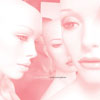 Pinkcourtesyphone is the not so secret alter ego of renowned sound artist Richard Chartier, and while it seems to be geared more towards a looser, more relaxed sensibility than the serious artist guise that is usually thrust upon him, it lacks none of his careful attention to structure and detail. Quite a bit of the material on this compilation (recorded erratically between 1997 and 2011) could pass for his normal work, but throws enough curve balls to give it a distinct identity all its own.
Pinkcourtesyphone is the not so secret alter ego of renowned sound artist Richard Chartier, and while it seems to be geared more towards a looser, more relaxed sensibility than the serious artist guise that is usually thrust upon him, it lacks none of his careful attention to structure and detail. Quite a bit of the material on this compilation (recorded erratically between 1997 and 2011) could pass for his normal work, but throws enough curve balls to give it a distinct identity all its own.
While the imagery and mood conveyed seems to lean a bit into the world of camp, it never goes too far. It isn't afraid to defy expectations either, however.For example, the overt sampled voices on "Wistful Wishful Wanton" and "Afternoon Theme/Germs Through Wires/Evening Theme" would never pop up on a traditional Chartier composition, but here they work, even if they’re treated and layered into near indecipherability.
The textural, analog noises of "A Dark Room Filled With Plastic Plants," however, isn't that far removed from the style he's known for, though the shift into almost uplifting, dreamy electronics at the end seems a bit more maximalist than I would have expected.The same goes for the echoing, reverberated clicks and clacks of "Here is Something…That is Nothing," which are occasionally disrupted by the almost techno-ish synth swells and jarring outbursts of sound.
The aforementioned "Afternoon Theme…" especially mixes things up, right from its opening of distant, jazzy horn like sounds and twittering, colorful electronics.With the exception of some passages of dissonant, machinery hums, it is far more in line with musicality than the clinical studies of sound he usually does.In general, the three long (20+ minute) pieces that make up the bulk of this album are surprisingly varied and dynamic, even if they often delve into quiet minimalism.
At first I was expecting Foley Folly Folio to be a bit more of a drastic departure from Richard Chartier's normal work…for some reason I was bracing myself for disco beats and house music orchestral hits, but the result was not quite extreme as I thought.In truth, it is probably all the better for that, and it does have a more relaxed, inviting feel overall.While I like the usual detached, clinical approach to sound art that Chartier usually engages in just fine, the unpredictability of this one made it stand out as rather unique, compelling, and even a little fun at times.
samples:
- Wistful Wishful Wanton
- Here is Something...That is Nothing
- Afternoon Theme/Germs Through Wires/Evening Theme
 
Read More
- Administrator
- Albums and Singles
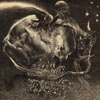 It would seem that the recent 7" single was truly an apt preview, because Jenks Miller (and band)'s newest full length explores the same combination of southern rock and black metal in further depth, with his usual penchant for disciplined minimalism and experimentation in tow. Half Blood is definitely the best rock/metal/whatever album for me this year, and anything else is going to be hard pressed to compete.
It would seem that the recent 7" single was truly an apt preview, because Jenks Miller (and band)'s newest full length explores the same combination of southern rock and black metal in further depth, with his usual penchant for disciplined minimalism and experimentation in tow. Half Blood is definitely the best rock/metal/whatever album for me this year, and anything else is going to be hard pressed to compete.
The first half of the record takes the more conventional rock direction that "On The Eclipse" did, right from the bass/guitar/organ opening of "Mithras," which wastes no time in locking itself into a memorable groove.Although it is still heavily steeped in a rhythmic sense of repetition, it feels much more dynamic than Miller’s more drone-based endeavors.
The following "Ahriman" mines similar territory: a loping, cyclic rock sound with just a bit of twang.Unlike most of the songs here, the lyrics are almost understandable, even if they are delivered with the demonic snarl that Miller has adopted from the black metal world."Arjuna" finishes up the mantra-esque metal sound, throwing in a bit more guitar soloing that stands out, but it never comes across as overly self-indulgent or masturbatory.
The remaining pieces still keep that bit of twang, but are less about convention and more about abstract ambience."Inheritance (The Changeling)" heralds its arrival with clattering percussive sounds and droning organ, eventually bringing in animalistic screams, and a funereal march of drums and piano.
The three part suite of "Hallucigenia" also opts to keep things more about texture and mood rather than headbanging-ready riffs.The first of these, "Hermetic Gifts," pairs elegant piano and almost delicate guitar playing above a bed of completely dissonant noise, each of the extremes balancing the other nicely."Spiritual Junk" initially is even more out there, focusing on clattering field recordings and distant synth static before bringing in the more conventional sounds of twangy guitar and repetitive drumming.
The expansive closer "The Emerald Tablet," returns to the disciplined repetition of The Invisible Mountain, beginning sparsely with feedback and a repetitive kick drum thump that slowly builds in complexity, adding guitar and electronics into a repeating, classically minimalist motif.
I have never been a fan of what generally is called southern rock, but Miller has integrated some of its better elements into Horseback, while keeping his penchant for rhythmic, old school minimalism.Even with the shift from Sabbath to the Allman Brothers as the musical touchstone, Half Blood is an even more fleshed out work that is as catchy as it is complex.While none of the Horseback material has been weak by any means, it has hit a high point here, and is one of those rare birds that isn’t afraid to rock out, but in an intellectually stimulating way.
samples:
 
Read More
- Administrator
- Albums and Singles
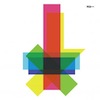 A large portion of this album was recorded in two great bastions of European electroacoustic music, namely INA-GRM in Paris and Stockholm’s EMS. While Peter Rehberg and Stephen O’Malley have always brought avant garde electronics to KTL’s sound, there is a much tighter focus on the sort of textures and structures that I would expect from composers like Bernard Parmegiani or Tod Dockstader. Even Mark Fell’s colorful artwork is reminiscent of INA-GRM’s own designs for their box sets of Parmegiani and Luc Ferrari. This is nothing short of a perfect meeting between KTL’s metal tinged atmospheres and the great electronic music experiments of the 20th century.
A large portion of this album was recorded in two great bastions of European electroacoustic music, namely INA-GRM in Paris and Stockholm’s EMS. While Peter Rehberg and Stephen O’Malley have always brought avant garde electronics to KTL’s sound, there is a much tighter focus on the sort of textures and structures that I would expect from composers like Bernard Parmegiani or Tod Dockstader. Even Mark Fell’s colorful artwork is reminiscent of INA-GRM’s own designs for their box sets of Parmegiani and Luc Ferrari. This is nothing short of a perfect meeting between KTL’s metal tinged atmospheres and the great electronic music experiments of the 20th century.
From the opening moments of "Phill 1" (perhaps a nod to Phill Niblock as well as the City of Prague Philharmonic who appear on "Phill 2"), it is clear that the duo will not be revisiting the wintery studies of previous recordings. Sustained tones, softly and slowly overlapping and phasing, reach out of the stereo like tendrils of new growth. The vague threat present throughout KTL’s back catalog is still here but whereas earlier albums were like a stiletto in the back, V feels more like being in the presence of a large, powerful creature that does not view you as a threat and will probably leave you alone. Probably.
The music comes close to O’Malley’s work in Sunn O))) during "Tony." The guitar becomes more prominent and the full, wall of amps sound that O’Malley is best known for comes through in spades. The addition of bass makes the low end rumble even more pronounced and before long, I forget that this is KTL that I am listening to. However, when Rehberg’s echoing computer generated sounds appear, I am quickly reminded of who this is.
The aforementioned "Phill 2" is undoubtedly one of the stand out pieces on V, the City of Prague Philharmonic playing an arrangement by Jóhann Jóhannsson to accompany O’Malley and Rehberg’s modular synth work from the EMS studio. The violins emerge suddenly from the gloom and at first it is difficult to tell where the synthesizers end and where the orchestra takes over. As the piece develops, the elements become more distinct and complex; the strings are tense and soaring while the electronics bubble and hum beneath the surface. When the brass cuts through, it shines brightly like a beam of divine sunshine in the darkness.
V finishes where KTL as a concept started, with a soundtrack to a Gisèle Vienne work. "Last Spring: A Prequel" ties in beautifully with the electroacoustic influences dotted throughout the album as it sounds very much like the sort of experimental hörspiel works practiced by the European avant garde and it even nods toward the music theater works of Einstürzende Neubauten or Nurse With Wound’s monologue pieces like "A New Dress" or "I Was No Longer His Dominant." The text is in French and difficult to follow with my rusty French and unfortunately there is no transcription let alone a translation in the sleeve notes. The monologue performed by Jonathan Capdevielle is given center stage; the incidental music is minimal, mostly concrète sounds and cavernous ambiences. It is creepy stuff, especially given Capdevielle’s strange vocal contortions.
In addition to the main album, the first 300 copies of the vinyl version of V come with a bonus 12" of sessions from INA-GRM. The four pieces (entitled "Study B" through "Study E") are looser than the main album, the duo obviously experimenting with the various bits of equipment in the GRM studio. Each piece has its own character but none of them fit entirely with the bulk of V; "Study E" sounds more like Fennesz than KTL. As a result, I can see why these pieces have been relegated to this 12" yet, that is not to say they are throwaway extras. They are bloody good tracks and would have made a nice EP on their own.
Since KTL’s inception, O’Malley and Rehberg have followed a singular path in terms of composition and mood. With V, they surprisingly break the mould and create something entirely unexpected. This is a great album, possibly their best one to date. With any luck they will continue along this path and develop this take on electroacoustic music further into realms unknown.
This review was made with a copy of the album on vinyl, so unfortunately there are no sound samples. Apologies for this inconvenience.
 
Read More
- Administrator
- Albums and Singles
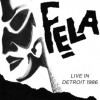 Following his long-overdue release from Nigerian prison in 1986, Fela Kuti launched his first-ever US tour and performed at the Fox Theatre in downtown Detroit, which in prior years had played host to career-defining concerts by Marvin Gaye and Stevie Wonder. This 3-disc archival release was lovingly assembled and remastered from bootleg tapes of Fela's concert that evening, which was riding high with expectations and overflowing with positive energy.
Following his long-overdue release from Nigerian prison in 1986, Fela Kuti launched his first-ever US tour and performed at the Fox Theatre in downtown Detroit, which in prior years had played host to career-defining concerts by Marvin Gaye and Stevie Wonder. This 3-disc archival release was lovingly assembled and remastered from bootleg tapes of Fela's concert that evening, which was riding high with expectations and overflowing with positive energy.
For me personally, Live in Detroit 1986 has served as an ideal introduction to Fela Anikulapo Kuti's recordings with his Egypt 80 band. Fela's discography is massive—he lived and breathed music, recording more than 18 studio albums—and aside from common entry points like Expensive Shit, Zombie, and Coffin for Head of State, I had trouble figuring out where to head next. Obviously, Live in Detroit wasn't quite as eye-opening as the first time I heard Fela: as a college freshman leaving the safe haven of guitar-based independent music nearly a decade ago, I ventured not only into early electronic and industrial music (thanks to Brainwashed), but also into funk, soul, and jazz. Hearing Fela draw influence from those genres, as well as traditional African percussion, on pieces like "Expensive Shit" and "Zombie" was a revelation. The tracks on Live in Detroit are a natural progression from Fela's '70s material: lengthy, expansive, and freeform (Fela having been a voracious marijuana user, I suppose that only makes sense), frequently emphasizing the jazzy aspects of Fela's sound over his well-documented James Brown and funk influence.
Live in Detroit is notable for several reasons. Chief among them, it represents the first new Fela material to be issued since his 1992 swansong, Underground System. At the time of this concert, Fela had been granted amnesty from a prison stint on false charges of "currency trafficking" (he was freed after two years with help from Amnesty International) and was finally able to launch a debut US tour with Egypt 80. Detroit's Fox Theatre was perhaps the most anticipated stop on the tour: the performing arts center had hosted Stevie Wonder and Marvin Gaye in their prime, as well as legendary performances by Elvis Presley even earlier. For Fela, this was one of his first big performances on US soil—his Africa 70 band never made it across the pond—and a triumphant return to the spotlight after his prison release. (Though not really "popular" by most measuring sticks, it is impossible to argue with Fela's status as one of Nigeria's best-known and most enduring musicians.)
With a keen sense of humor, Fela comments on his misfortune as he kicks off the concert: "You going your way, mind your business, you didn't do shit, didn't do nothing... next thing, you're in prison, man—just like that." The crowd roars in agreement, and Fela continues: "In my country, things happen just like that," and clarifies that he's referring not only to Nigeria, where he was wrongfully imprisoned, but to all of his "country," Africa. Fela's music was almost always politically charged, a voice of protest in the face of human injustice across Africa, but that's easy to forget as the music kicks in. During "Just Like That," the persistent rhythm section of Fela's Egypt 80 band lays the groundwork for a sprawling performance that cycles through keyboard vamps, trumpet and saxophone solos, poly-rhythmic drumming, chanted background vocals as if from a church choir, and call-and-response interaction with the elated crowd. The performance is brimming with tangible positive energy due to Fela's showmanship. The man who recorded the show, Bob Teagan, recalls that Fela was "dancing all across the massive stage and inciting the crowd to move with him. [...] It was like seeing Bob Marley, Frank Sinatra, Michael Jackson, Marvin Gaye, and James Brown all rolled into one."
As the evening unfolds, it becomes apparent that Fela is placing focus squarely on his new and then-unreleased material. Each of these songs was among the first Fela wrote upon gaining his freedom: "Teacher Don't Teach Me Nonsense" and "Just Like That" were released on his 1986 album Teacher Don't Teach Me Nonsense. The show's energetic, 35-minute closer, "Beast of No Nation," was eventually recorded for 1989's Beasts of No Nation, while "Confusion Break Bones" finally saw the light of day on 1990's O.D.O.O., one of Fela's final studio albums before passing away of AIDS complications in 1997. This focus on all-new material in the set list shows a man unafraid to push forward with his music. Fela clearly considered Egypt 80 to be a wholly separate entity from Africa 70 a decade prior, with which he recorded his best known, and most politically provocative, music.
The sound quality on Live in Detroit is rich and nicely mastered, especially given its prior status as a bootleg crowd recording. Quieter moments are shot through with occasional crowd chatter and clapping, and at times throughout the performance, the crowd roars in approval while the music stays constant, and it's clear Fela is engaging with the audience in ways that would be better captured on film, not an audio recording. Though never dull, the sprawling nature of Live in Detroit can, at times, seem like an endurance test: four songs, two-and-a-half hours, and a couple spoken-word interludes from Fela. My inclination has been to play one of the discs on repeat: for example, getting engulfed in 40 minutes of "Confusion Break Bones" as if listening to ambient music that just happens to encompass elements of funk, jazz, and African music. None of this is to say that Live in Detroit isn't worth picking up—especially as a gateway to Fela's less canonized '80s music—but that listening to these CDs, as with all live recordings, isn't quite the same as being there.
Samples:
Read More
- Administrator
- Albums and Singles
 The first essential compilation of the year for me has come in the form of a Shockout Records retrospective that collects tracks previously released only vinyl. It couldn't have come too soon because tracking down the 12" and 7" records these songs are from has been alternatingly frustrating or impossible. That the brand of mash up ragga jungle breaks that Shockout deals in is not more widely accepted is a crime. This, to me, is what pop music ought to sound like in 2004. I'm not deluded: I don't expect the Bug and Wayne Lonesome to achieve Britney or U2 status, but there's no good reason this stuff hasn't broken out of its fringe niche market. When I think about the perfect pop song, there is a pretty standard formula that weighs down on just about every pop song ever hummed in a car or slapped on a mix tape. It has to be short; GYBE is great, but it's beyond the attention span of the pop audience. It has to have a catchy rhythm or melody, and by nature of the ragga/dub/jungle fusion, all of these tracks have that. It also needs a vocal hook, because no matter what the cutsey, instrumental electro-pop discs that fly over from Germany like to think, a pop song is anchored by the vocal. While I can't understand half of what the MCs are saying on these tracks, they are nevertheless some of the best hooks anyone has put to music in the last few years. I don't know how many times I've walked out of the elevator in my building singing "Killer" or "WWW" to myself. By bringing together the raw grit of hardcore hip hop, an experimental studio approach to production, the rhythms and mashed up collages of jungle and breakbeat music, and the soul of ragga and dancehall the Shockout artists are essentially creating the recipie for the perfect multi-cultural distopian pop of our generation. That this stuff gets resigned to relative obscurity and special-order status means that it's not likely that the sound or the scene will evolve as quickly as it should. When mainstream artists are producing some of the sickest and slickest beats and taking more risks than their underground counterparts, it opens up a whole new world of innovation and experimentation that inevitably leads to something even fresher and weirder. The artists on the Shockout roster should be approaching that kind of uncomfortable intermediate area where what they are doing is recognized enough to lead some of them into the neverland of major labels, but instead the whole thing is promoted with the zeal for the underground that limits its audience unnecessarily. It's a dedication that I admire on the one hand, but simply don't understand on the other. Surely there's a way to keep the artistic integrity in tact while getting discs like this into the hands of the millions of people who would no doubt love them if they knew Shockout existed. Look for the bandwagon to be rolling in 2005, and for Shockout to continue to lead the way.
The first essential compilation of the year for me has come in the form of a Shockout Records retrospective that collects tracks previously released only vinyl. It couldn't have come too soon because tracking down the 12" and 7" records these songs are from has been alternatingly frustrating or impossible. That the brand of mash up ragga jungle breaks that Shockout deals in is not more widely accepted is a crime. This, to me, is what pop music ought to sound like in 2004. I'm not deluded: I don't expect the Bug and Wayne Lonesome to achieve Britney or U2 status, but there's no good reason this stuff hasn't broken out of its fringe niche market. When I think about the perfect pop song, there is a pretty standard formula that weighs down on just about every pop song ever hummed in a car or slapped on a mix tape. It has to be short; GYBE is great, but it's beyond the attention span of the pop audience. It has to have a catchy rhythm or melody, and by nature of the ragga/dub/jungle fusion, all of these tracks have that. It also needs a vocal hook, because no matter what the cutsey, instrumental electro-pop discs that fly over from Germany like to think, a pop song is anchored by the vocal. While I can't understand half of what the MCs are saying on these tracks, they are nevertheless some of the best hooks anyone has put to music in the last few years. I don't know how many times I've walked out of the elevator in my building singing "Killer" or "WWW" to myself. By bringing together the raw grit of hardcore hip hop, an experimental studio approach to production, the rhythms and mashed up collages of jungle and breakbeat music, and the soul of ragga and dancehall the Shockout artists are essentially creating the recipie for the perfect multi-cultural distopian pop of our generation. That this stuff gets resigned to relative obscurity and special-order status means that it's not likely that the sound or the scene will evolve as quickly as it should. When mainstream artists are producing some of the sickest and slickest beats and taking more risks than their underground counterparts, it opens up a whole new world of innovation and experimentation that inevitably leads to something even fresher and weirder. The artists on the Shockout roster should be approaching that kind of uncomfortable intermediate area where what they are doing is recognized enough to lead some of them into the neverland of major labels, but instead the whole thing is promoted with the zeal for the underground that limits its audience unnecessarily. It's a dedication that I admire on the one hand, but simply don't understand on the other. Surely there's a way to keep the artistic integrity in tact while getting discs like this into the hands of the millions of people who would no doubt love them if they knew Shockout existed. Look for the bandwagon to be rolling in 2005, and for Shockout to continue to lead the way. - Soundmurderer & SK-1/Wayne Lonesome - Who Wan Seek War (Rewind Mix)
- The Bug vs. Rootsman/Mexican - WWW (Kid 606 Remix)
- Rootsman/He-Man - Killer
Read More
- Administrator
- Albums and Singles
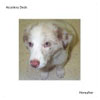 Of all the Piehead releases this year, the ninth in the monthly series from Accelera Deck was the one I was most interested in hearing. Having loved some of his earlier work and then really despised his last EP, I waited for Hereafter wondering which Accelera Deck would turn up. As it turns out, I'm quite taken with most of the tunes here, and there's only one that leaves me scratching my head, wondering what the hell is supposed to be going on. For the first three tracks of the disc, the ambient drone, guitar noise Accelera Deck is in full play, and these pieces work well in creating atmosphere and momentum. Feedback and mic noise and guitar buzzing is easily coxed into a world of loops and textures that create a sometimes playful, sometimes menacing environment. "Fireflies" devoles from a pretty ambient excusrion into sputtering clicks and noise that lead into the disc's only real weakness. And for all its clicks and digital abstractions, I was even with the meandering "Wide Awake" until about the five minute mark when I threw up my hands and yelled "What is the point?" It sounds like the song just goes into algorhithmic auto-pilot and while the programming and synthesis at work might itself be interesting on a conceptual level, it's just not a fun listen. Experimentation and risk-taking like this is commendable, but artists who bank on it need to be able to recognize when it works and when it flops. After the all-out glich assault of "Wide Awake", the melody of "Immacualte" sounds almost overly-sentimental, but it's a beautiful and welcome rest from the noise. The record closes with soft, reverb-drenched chords that echo out into the ether, brining the journey of Hereafter to a purposeful and appropriate end. The disc clocks in at only 37 minutes, but the great majority of those are minutes worth exploring and embracing.
Of all the Piehead releases this year, the ninth in the monthly series from Accelera Deck was the one I was most interested in hearing. Having loved some of his earlier work and then really despised his last EP, I waited for Hereafter wondering which Accelera Deck would turn up. As it turns out, I'm quite taken with most of the tunes here, and there's only one that leaves me scratching my head, wondering what the hell is supposed to be going on. For the first three tracks of the disc, the ambient drone, guitar noise Accelera Deck is in full play, and these pieces work well in creating atmosphere and momentum. Feedback and mic noise and guitar buzzing is easily coxed into a world of loops and textures that create a sometimes playful, sometimes menacing environment. "Fireflies" devoles from a pretty ambient excusrion into sputtering clicks and noise that lead into the disc's only real weakness. And for all its clicks and digital abstractions, I was even with the meandering "Wide Awake" until about the five minute mark when I threw up my hands and yelled "What is the point?" It sounds like the song just goes into algorhithmic auto-pilot and while the programming and synthesis at work might itself be interesting on a conceptual level, it's just not a fun listen. Experimentation and risk-taking like this is commendable, but artists who bank on it need to be able to recognize when it works and when it flops. After the all-out glich assault of "Wide Awake", the melody of "Immacualte" sounds almost overly-sentimental, but it's a beautiful and welcome rest from the noise. The record closes with soft, reverb-drenched chords that echo out into the ether, brining the journey of Hereafter to a purposeful and appropriate end. The disc clocks in at only 37 minutes, but the great majority of those are minutes worth exploring and embracing. Read More


